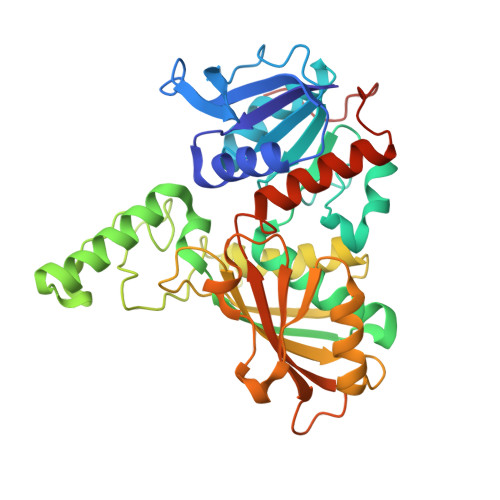Structural Characterization of Inhibitors with Selectivity against Members of a Homologous Enzyme Family.
Pavlovsky, A.G., Liu, X., Faehnle, C.R., Potente, N., Viola, R.E.(2012) Chem Biol Drug Des 79: 128-136
- PubMed: 22039970
- DOI: https://doi.org/10.1111/j.1747-0285.2011.01267.x
- Primary Citation of Related Structures:
3PWK, 3PWS, 3PYL, 3PYX, 3PZB, 3PZR, 3Q0E, 3Q11, 3Q1L - PubMed Abstract:
The aspartate biosynthetic pathway provides essential metabolites for many important biological functions, including the production of four essential amino acids. As this critical pathway is only present in plants and microbes, any disruptions will be fatal to these organisms. An early pathway enzyme, l-aspartate-¦Â-semialdehyde dehydrogenase, produces a key intermediate at the first branch point of this pathway. Developing potent and selective inhibitors against several orthologs in the l-aspartate-¦Â-semialdehyde dehydrogenase family can serve as lead compounds for antibiotic development. Kinetic studies of two small molecule fragment libraries have identified inhibitors that show good selectivity against l-aspartate-¦Â-semialdehyde dehydrogenases from two different bacterial species, Streptococcus pneumoniae and Vibrio cholerae, despite the presence of an identical constellation of active site amino acids in this homologous enzyme family. Structural characterization of enzyme-inhibitor complexes have elucidated different modes of binding between these structurally related enzymes. This information provides the basis for a structure-guided approach to the development of more potent and more selective inhibitors.
Organizational Affiliation:
Department of Chemistry, University of Toledo, Toledo, OH 43606, USA.




















